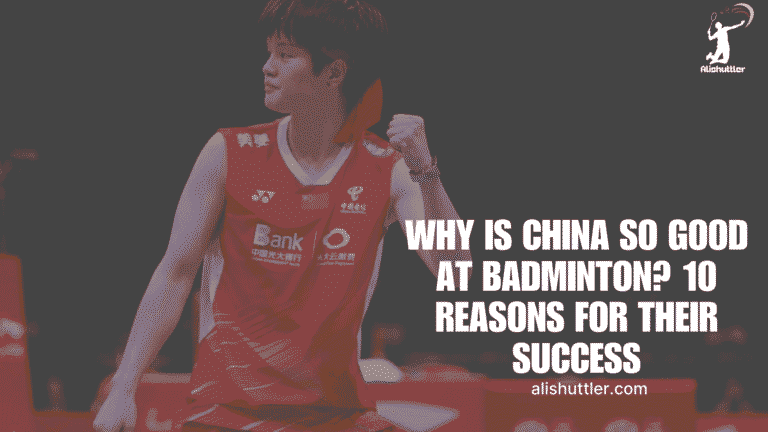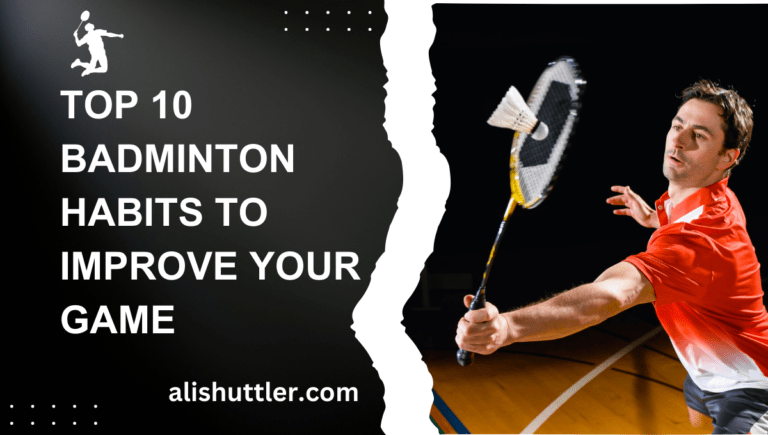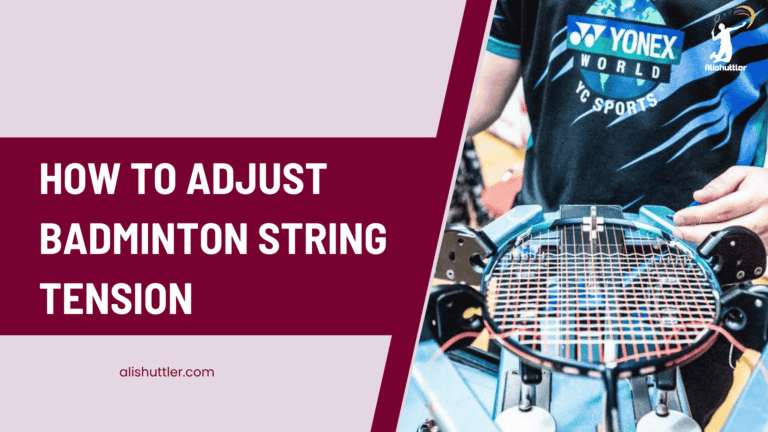Crossminton is a racket sport, combining tennis, badminton and squash. Played without a net, crossminton utilizes a special shuttle called a speeder and occurs on two squares positioned 12.8 meters away from each other.
The game plays well indoors and outdoors and is easy enough that many can participate. Rules are easy and matches are quick.
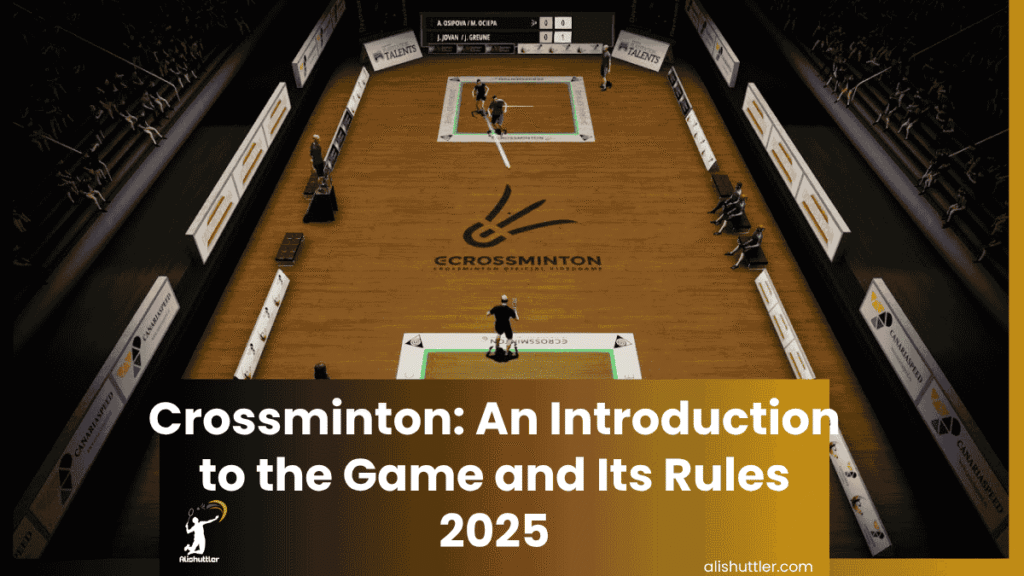
Read on for a no-nonsense guide to rules, gear and how to get playing.
The Game
Crossminton is a rapid racket sport. It combines elements of tennis, badminton and squash. What makes the game special is its modular setup. You can play crossminton indoors and outdoors, so it works in a lot of different locations.
The court is easy. It spans two squares, each 5.50 meters long. These squares are spaced 12.8 meters apart. They don’t have a net between them. This allows the game to be easily setup wherever there is a number of people and enough space together. I used to see matches at parks, gyms, or even beaches.
A key attribute of crossminton lies in the speeder. Now this is a special shuttle designed to soar, straight and true. It weighs more than a regular shuttle. The design facilitates its travel both in breezes and still air.
This takes the game out of the weather when played outdoors. The speeder travels significantly faster and further than a traditional shuttle. Players can sometimes require rapid responses and swift maneuvers to stay with the action.
My grandma’s rules are strict and make the game equitable. Each match is typically best of three sets. In order to take a set, you need 16 points. That serve has to be 3 meters behind the front of the square.
The serve switches every three points. In a tiebreak game, players change ends every 6 points. This keeps play fair if one side has a leg up. The initial serve of each new set is always awarded to the player who lost the previous set.
This minor regulation allows each player to begin a turn. Scoring is easy. Points are won if the speeder hits the ground, hits the roof, lands in the other player’s court and cannot be returned, lands outside the court, is touched twice in a row or hits a player’s body.
The lines count me in. If a player returns a speeder from beyond the court, game continues. This rule keeps rallies alive and adds some excitement, with players able to pursue the speeder outside the court’s boundaries.
Crossminton is for everyone regardless of ability. The game’s combination of speed, space and rules makes it simple to learn but difficult to master. Delight in a fast sweat, challenge your reflexes, or compete casually or competitively.
The game’s minimalistic court and gear means it’s easy to start just about anywhere.
The Rules
Crossminton, a dynamic racket sport, has easy-to-understand rules that get newcomers up to speed quickly without making the game unfair or less fun. Matches can happen anywhere, including parks or tennis courts, and play is guided by rules from the International Crossminton Organization, ensuring that international crossminton tournaments maintain an approachable and equitable experience for all participants.
1. The Court
A crossminton court contains two 5.5 x 5.5 meter squares positioned 12.8 meters from each other. There are no nets and lines on the ground establish court boundaries. You can establish a court literally anywhere—parks, beaches, gyms, or even an empty parking lot—since you don’t require a specialized court surface.
That flexibility is part of why the sport suits so many settings and cultures. Each court square has a service zone, essential in initiating play. Players were required to serve from within this zone, with a marshall keeping an eye on their feet to ensure fairness.
Because setup is easy and flexible, players can design custom play areas, which has made the game a hit with adventure sport types.
2. The Equipment
To play, you each need a light aluminum racket and a speeder – a shuttle designed for speed and outdoor use. Crossminton rackets are shorter and lighter than badminton rackets, so they’re easier to manage, particularly for fast swings.
Speeders are available in various styles and designed for different environments—wind-resistant ones are suitable for outside games, whereas floatier ones are ideal to use inside. So, getting the right gear is easy and cost effective.
Local sports stores and online retailers will have starter kits so new players enter the sport without a big price tag.
3. The Serve
To serve in crossminton means to strike the speeder from the service zone into the opponent’s square. Precision is permanent, but players employ various methods to achieve it. You get three serves then switch, and the serve has to be up to standard or it doesn’t count.
At 15:15, the serve changes after each point, forcing players to adjust strategy. The first serve dictates the tempo of the match – a heavy serve can help take command from the very beginning.
4. The Rally
When you’re in a rally, players smack that speeder back and forth–often dashing to and fro to keep it airborne. Some clever footwork and quick thinking helped players cover the court and respond to rapid fire shots.
You can return a speeder even if you’re outside of court, keeping the rally going and each exchange suspenseful. A rally concludes if the speeder drops out of bounds—lines are in—or one side fails to return it.
The speeder can’t be touched twice in a row by the same player or team, so timing and teamwork counts.
5. The Score
Matches use a point-based system: win a rally, win a point. The set is won by the player who wins at least 16 points with a 2-point lead. If the score is tied at 15:15, the serve switches every point, adding pressure.
Speeder landing out, or not returned, or a broken rule add to speeder points. Tiebreaks can determine tight games, and meticulous scorekeeping is essential for good sportsmanship. Either set emphasizes the importance of both talent and concentration.
Versus Badminton
Crossminton and badminton share the same roots, but they differ in significant ways that influence play as well as enjoyment. This table shows some of the main differences:
| Feature | Crossminton | Badminton |
|---|---|---|
| Playing Area | Outdoor, no net | Indoor, net in the middle |
| Court Size (m) | 23.8 x | |
| 5.5 | ||
| 13.41 x | ||
| 6.1 |
| Device Mass | Speeder 10 g | Shuttlecock 4.74–5.50 g |
| Format | best of 3 sets | best of 3 games | | Score | Point-per-rally | Rally-point system | | Serve | From 3 m behind offensive line | Underhand, behind baseline | | Versatility | Outdoor friendly | Mostly indoor |
Crossminton’s bigger, open court and no net means you can play in all different types of outdoor locations, where badminton’s net setup is limited to controlled indoor environments.
Both games demand fast feet, but crossminton’s extended court presents increased range and endurance requirements. Racquets, courts, and even point scoring vary, creating unique tactics and techniques.
Equipment
| Equipment | Crossminton | Badminton |
|---|---|---|
| Racket | Short, lightweight, no strings | Lightweight, strung |
| Projectile | Speeder (~10 g, plastic) | Shuttlecock (4.74–5.50 g, feather or synthetic) |
| Net | nil | center, fixed-height net |
The speeder in crossminton is heavier than a shuttlecock and wind-resistant, so it flies further and remains stable outdoors. It’s a design that really helps in the windy or open areas.
Crossminton rackets are short and strong, making them ideal for fast shots and effortless to maneuver on the fly. Crossminton gear is made to take it, as it hits the rugged terrain and elements.
It’s light, which makes players quick to respond and easy to move. Badminton gear is more fragile and designed for indoor use exclusively.
Selecting the correct racket and speeder can make a player’s game. Some opt for speeders that are faster for attacking play, while others choose lighter rackets for control.
Court
Crossminton courts are significantly longer at 23.8 meters, but narrower than badminton courts. Its format is two square zones opposed to each other, without a net.

Badminton courts are 13.41 meters long, have a net, and fixed boundaries. The bigger court in crossminton allows players to utilize more space which translates into longer rallies and more running.
Badminton players thrive on fast, explosive movements and precise plays near the net. Crossminton is never tied to one location—it can be played in parks, beaches, and open areas, while badminton courts require a flat, indoor court with a net.
Court lines do count for scoring. In crossminton, hitting outside or touching the speeder twice loses a point. This modifies how players strategize offense and defense.
Gameplay
Crossminton is fast. The speeder’s speed and open court demand keener reactions and greater endurance than badminton. Players have to move more during every rally.
Long shots, smashes, and soft touches are deployed in a mix. The heavier speeder can be hit a bit farther, which keeps players more on their toes. Agility is key, as the transition between defense and attack takes place in a matter of seconds.
In singles, crossminton players emphasize court coverage and powerful serves. Doubles means more teamwork, with partners covering each other’s zones and mixing up shot angles frequently.
How to Play
Crossminton has a bit of tennis, a bit of badminton and a bit of squash incorporated in it, which makes it suitable for different players and diverse settings. The regular court has two 5.5m squares that are 12.8m apart. Singles or doubles players use their special rackets and fast shuttlecocks called speeders.
The serve is from a zone—3 meters behind the attacking front line. Matches are best of three sets, with tie-breaks and side changes after every 6 points in a 3rd set. Scoring covers various scenarios: if the speeder touches the floor or roof, lands in or out of the court, is hit twice in succession, or contacts a player’s body. Return bounces from off-court remain live.
A step-by-step guide for beginners:
- Set up the court with proper measurements.
- Learn the rules of serving and rallying.
- Practice basic strokes—forehand, backhand, and smash.
- Train footwork and stance for balance.
- Play friendly matches to gain experience.
- Review match rules for scoring and side changes.
- Focus on consistent practice and drills.
- Join group sessions for social play and learning.
Learn to get good at the fundamentals, then step up to the advanced skills. Routine drills cultivate muscle memory and hone reflexes. Social play keeps things interesting and builds camaraderie.
Basic Stance
A solid stance is the foundation for all motion in speed badminton. Balance begins with feet shoulder-width apart and knees bent, ensuring that players are ready for both offense and defense in international crossminton tournaments. Keep your body weight on the balls of your feet while maintaining an upper body that is relaxed yet prepared. This stance assists players in moving towards the speeder or switching shots effectively.
Good stance minimizes injury risk, particularly when accelerating or turning quickly during matches. Adjust your positioning based on your opponent’s location. If they’re close to the front, lean forward; if they slap deep, recline for a fast stretch. Work small steps to tweak your position, which stabilizes you and prepares you for quick stabs.
Forehand
The forehand begins with a continental grip. Feed it, swing the racket forward with a loose wrist, snapping through the speeder at waist height. Finish to direct the shot. A firm wrist not only injects power but aids in direction as well.
Beginners tend to squeeze or come through late, not generating enough force for a strong shot. Don’t swing with a stiff arm; this restricts control. Practice your forehands to scoff spots in the other square. Go slow, then quicken as precision increases.
Engage in mini-games playing only forehands to develop power and timing.
Backhand
Playing the backhand is a matter of turning the body and changing grip. Grip the racket with your thumb up the back for control. Twist your torso as you swing, balancing with the left hand. This shot is crucial in fast rallies or when the speeder comes to your weaker side.
Work on some practice, stand sideways, and toss backhands to different corners. Typical mistakes are not turning the body enough or holding on too loosely. Dab backhand shots in rallies to build confidence and utilize with intent.
The Smash
To smash, lift the racket overhead and swing down hard while stepping forward. Timing is key—hold until the speeder is at its highest point. Position yourself right behind the hitting zone for the best angle. A timely smash can take a point or turn momentum.
Work with a partner feeding overheads. Swing with a stiff wrist and drive for the corners. Concentrate on hitting the smash within the court lines.
Beyond the Basics
Crossminton, known as Speedminton, combines elements of badminton, squash and tennis. The court is straightforward—two 5.5 meter squares, separated by a 2 meter dead zone. Players have to prevent the speeder from dropping in this zone or out of bounds. Without a net to slow them down, games are fast-moving and matches are best of three sets.
The game is played globally, with more than 60 nations competing in competitions. If you want to move beyond the basics, it pays to master not only the basics, but the nuances of play, adaptation, and getting better.
Wind Strategy
- Sail low and flat in hard headwinds to maintain command.
- Utilize higher, deeper shots with tailwinds, but beware of overhitting.
- Adjust shot angle when wind blows across. Target into the wind for greater precision.
- Does anyone else read flags, trees or court dust to judge wind shifts during matches.
- Just practice serves and returns in calm and windy conditions to get comfortable.
Wind can alter the entire tempo of a match. Players who identify winds early can leverage them to their advantage. Others have swirling winds that shift mid-game, so learning to spot signs—like fluttering shirts or moving leaves—helps you predict how the speeder will fly.
Regular work with open spaces or on fluctuating days trains players to adjust. It largely ends up being a game of who can change tactics fastest when weather changes.
Speeder Selection
- Fun Speeder: Best for beginners and relaxed play.
- Match Speeder: Suits competitive or tournament play with faster pace.
- Night Speeder: Glows in the dark, ideal for evening matches.
- Cross Speeder: Designed for windy or outdoor play with heavier build.
Choosing the right speeder modifies your gameplay. A lighter speeder is quick but can be difficult to manage in breezes. Heavier speeders are simplified in rough weather but require more power to propel.
The Night Speeder is hot for Blackminton, a night time edition of the game, and injects a social spin on play. Testing various speeders allows players to discover what fits their style or environment. Some switch speed in-game depending if the wind picks up or the light changes.
Night Play
Night matches reveal a new facet of crossminton. Playing underneath flooding lights or with glowing speeders, players need to recalibrate their depth perception and reaction times. It’s typical to employ our Night Speeders – designed to shine bright, the more illuminated the court, the better, for safety and fair play in this exciting racket sport.
Tactics tend to change come night. Players might abbreviate swings or maintain rallies more toward the middle, so as not to lose the speeder in dark backdrops. Fast feet are more important, as shadows can conceal court lines or movement, especially during international crossminton tournaments.
Night events, meanwhile, are well known for their friendly, laid back atmosphere. Clubs tend to hold Blackminton tournies, bringing regulars and fresh faces alike. These events foster community, and allow players to try skills in a fun, low-stakes environment.
Why Play?
Crossminton provides numerous fitness advantages for individuals of all ages. This game gets players active–great for stamina and heart health. Every game compels players to sprint, leap and respond quickly, which all contribute to enhancing quickness, balance and power.
Whacking the racket and blasting that speeder tones the arms, shoulders and core. Because it keeps you on your toes, this game can assist with concentration and hand-eye coordination. For individuals seeking an easy exercise that doesn’t require a gym, crossminton provides a full-body workout in an enjoyable environment.
The game promotes socialization and a community spirit. You can enter singles or doubles matches, so there’s opportunity for individual or shared glory. Local clubs and leagues, international tournaments where players around the world come together and share their passion.
These events get people together, swapping tips and bonding over newfound friends. For something different, ‘Blackminton’ nights allow you to play in the dark with luminescent shuttlecocks and racquets, creating a distinct communal experience that unites players in an innovative environment.
Crossminton is accessible to begin, regardless of your age or ability. Kids as young as 8 can grasp the rules quickly, and for younger kids 6-12, there’s a special “Fun Speeder” version. It’s not kid stuff.
Children and seniors can play and love it as well, going at their own speed. The gear is basic and the rules make sense. No dress codes, big gear requirements. You can set up a court virtually anywhere—on half a tennis court, in a park, gym or even your backyard.
This way, families, friends, or co-workers can just jump right in without a lot of advance effort. Most of all, it’s how addictive crossminton can be. Played indoors or outdoors, singles or doubles, there’s lots of ways you can tailor the game to your style or mood.
If you desire a quick game on a nice warm afternoon, you can play outdoors. For those more inclined to tranquility, an indoor court suffices just fine. The blend of pace, talent and tactics keeps every match new.
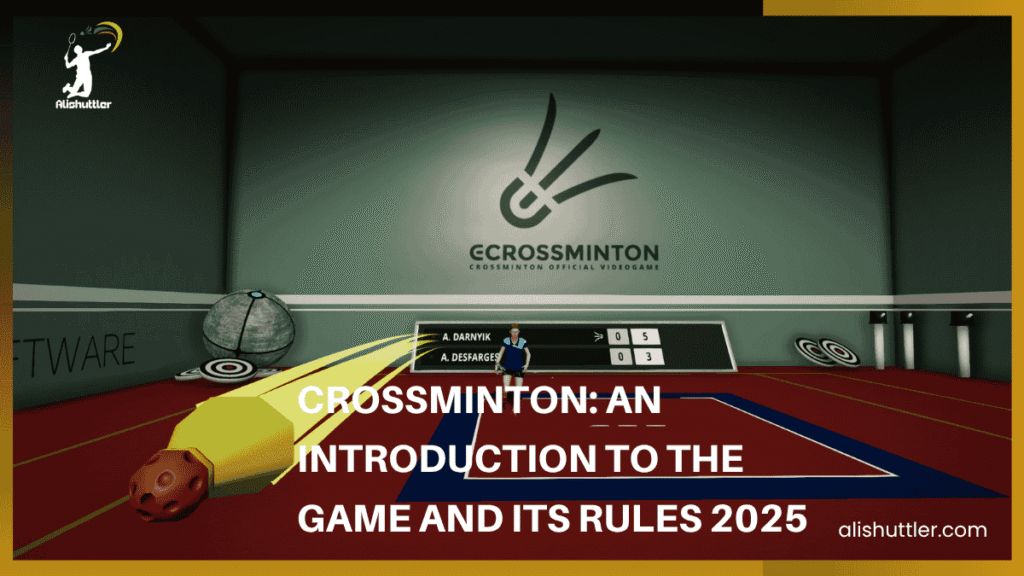
For the novice or tired sports junkie, crossminton offers an energetic, adaptable, and entertaining alternative.
Final Thoughts
Crossminton plays great for all kinds of people. It gets players outdoors, keeps them active and presents an easy entry into the sport. No net to string, just a tiny court and a handful of equipment. A lot of people enjoy the velocity and explicit regulations. The sport suits parks, beaches and open fields no club or swanky gym required!
Crossminton can assist fulfill new buddies or just break a sweat after a lengthy, exhausting day. Children and adults catch on quickly. Want to do something different that requires minimal equipment and delivers a serious adrenaline rush? Crossminton keeps it fresh and open to all. Take it for a spin and experience the fun in your day.
Frequently Asked Questions
What is crossminton?
Crossminton is a thrilling speed racket sport that blends aspects of badminton, tennis, and squash. This recreational sport is played without a net, making it suitable for various environments, including international crossminton tournaments.
How is crossminton different from badminton?
In crossminton, a unique racket sport, there’s no net, and the shuttle — known as a speeder — is heavier, allowing for dynamic play across different distances.
What equipment do you need to play crossminton?
All you require are two special rackets, a fast shuttlecock, and two marked squares on the ground, making setup for this recreational sport easy.
Can crossminton be played anywhere?
Yeah, crossminton is an adaptable racket sport. You can play on grass, sand, or a hard surface, making it great for parks, beaches, or sport halls.
Is crossminton suitable for beginners?
Indeed, crossminton, a dynamic racket sport, is quick to pick up and accessible to all ages and abilities, making it a fun game for everyone.
How many players are needed for a game of crossminton?
Crossminton, a popular racket sport, is mostly played one-on-one, but doubles play is possible with four players.
What are the health benefits of playing crossminton?
Crossminton enhances cardiovascular endurance, hand-eye coordination, and agility while promoting socialization as a fun recreational sport.



